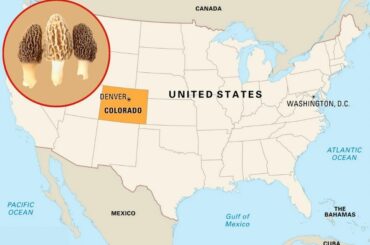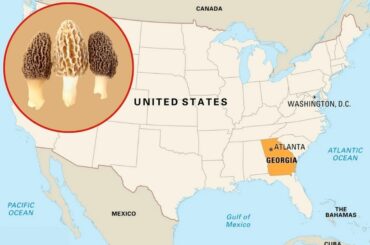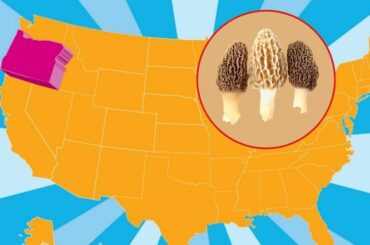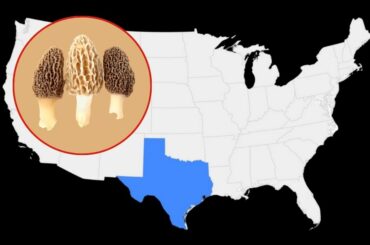Morel mushrooms, prized for their unique flavor and distinctive appearance, are a delightful find for mushroom enthusiasts and foraging enthusiasts alike.
Kentucky, with its diverse landscape and suitable growing conditions, offers ample opportunities for finding these elusive and delicious mushrooms. In this article, we will explore the best locations, tips, and precautions for finding morel mushrooms in Kentucky.
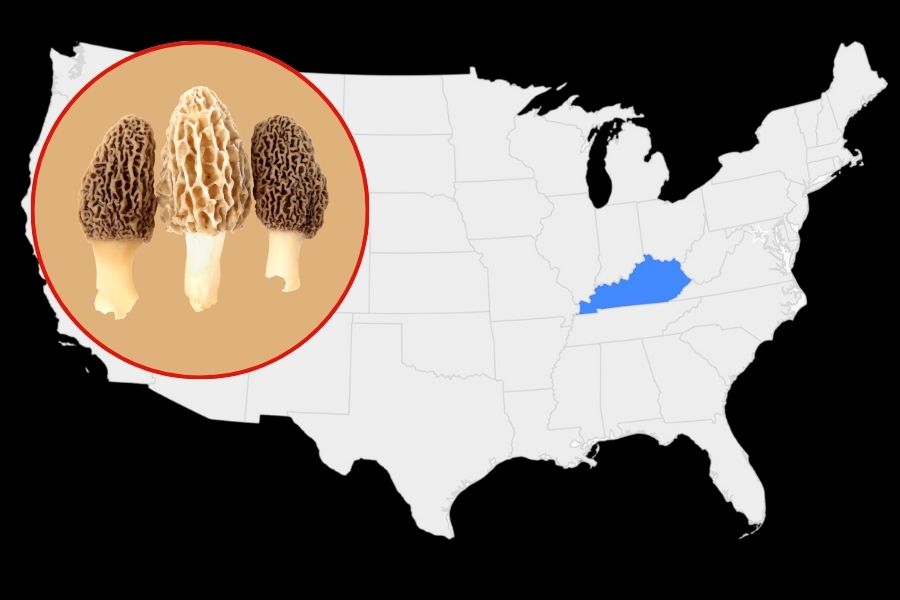
Where to Find Morel Mushrooms in Kentucky?
Contents
- 1 Where to Find Morel Mushrooms in Kentucky?
- 2 Growing Conditions for Morel Mushrooms
- 3 Morel Mushroom Season in Kentucky
- 4 Kentucky Mushroom Hunting: Resources
- 5 Laws and Rules for Mushroom Hunting in Kentucky
- 6 Common Edible Mushrooms in Kentucky
- 7 Toxic Mushrooms in Kentucky
- 8 Safety Precautions for Mushroom Hunting
- 9 Tips for Finding Morel Mushrooms in Kentucky
- 10 Conclusion
- 11 FAQs
Kentucky is home to several renowned morel mushroom hunting spots. Here are some popular locations where you can increase your chances of finding these delectable fungi:
- Daniel Boone National Forest: This expansive forest provides ample opportunities for mushroom hunters. Look for morels near dead or dying elm, ash, and apple trees.
- Mammoth Cave National Park: The park’s diverse terrain and rich soil offer favorable conditions for morel mushrooms. Explore the wooded areas and the edges of hiking trails.
- Land Between the Lakes National Recreation Area: With its diverse landscape, this area is a prime spot for morel mushroom hunting. Check near tulip poplar and oak trees.
- Red River Gorge Geological Area: This scenic area is known for its stunning rock formations and is a promising place for morel mushroom enthusiasts. Look for morels near dead or decaying trees.
Growing Conditions for Morel Mushrooms
Understanding the ideal growing conditions for morel mushrooms is crucial for successful foraging. These mushrooms thrive in areas with a combination of moist soil, warm temperatures, and decaying organic matter. Kentucky’s climate, with its mild spring temperatures and fertile soil, provides an ideal environment for morel mushroom growth.
Morel Mushroom Season in Kentucky
The morel mushroom season in Kentucky typically occurs in early spring, usually from late March to early May. This period coincides with the awakening of nature after the winter months. As the soil temperature rises above 50°F (10°C) and the forest floor becomes moist, morel mushrooms begin to emerge.
Kentucky Mushroom Hunting: Resources
Many online resources have been made available by the University of Kentucky to learn more about mushrooms and how to recognize them!
- Two educational movies on their Intro to fungus page describe the different types of fungus mushrooms and how they develop.
- What’s That Fungus is another page that they have. features numerous brief movies describing the various types of mushrooms that grow in Kentucky and how to recognize them.
- If you’re interested in cultivating, there is also a website on producing your own mushrooms!
- Attending the yearly Mountain Mushroom Festival is another option to connect with other “mushroomers” besides local clubs. At the end of April, when morel mushrooms are at their optimum, Irvine, Kentucky, hosts a fantastic festival.
Laws and Rules for Mushroom Hunting in Kentucky
In Kentucky, there are specific laws and rules related to mushroom hunting that must be followed. It is important to adhere to these regulations to ensure the sustainability of mushroom populations and to avoid any legal issues. Here are some key laws and rules for mushroom hunting in Kentucky:
- Licenses and Permits: In Kentucky, a hunting license is not required specifically for mushroom hunting. However, if you plan to hunt mushrooms on state wildlife management areas, a general hunting license may be required. It is always advisable to check the specific regulations and licensing requirements with the Kentucky Department of Fish and Wildlife Resources.
- Private Property Permission: If you wish to hunt for mushrooms on private property, you must obtain permission from the landowner beforehand. Trespassing without proper authorization is illegal and can lead to legal consequences.
- National and State Park Regulations: When mushroom hunting in national and state parks, it is essential to comply with the specific rules and regulations of each park. Some parks may have restrictions on collecting mushrooms, while others may allow limited harvesting for personal use. Check with park authorities or visitor centers for any guidelines or permits required.
- Protected Species: It is crucial to familiarize yourself with protected mushroom species in Kentucky. Harvesting protected or endangered mushroom species is strictly prohibited. Consult reliable field guides or experts to identify and differentiate between edible and protected species.
- Bag and Possession Limits: Although Kentucky does not have specific bag or possession limits for mushrooms, it is recommended to harvest only what you can consume or use responsibly. Over-harvesting can negatively impact mushroom populations and their natural habitats.
- Leave No Trace: Practice responsible foraging by following the principles of Leave No Trace. Avoid damaging vegetation, disturb the forest floor as little as possible, and leave the environment in its natural state for others to enjoy.
- Safety Precautions: Ensure you are knowledgeable about mushroom identification and are confident in differentiating edible species from poisonous ones. Mushroom hunting can be risky if you are not familiar with the mushrooms in the area. If in doubt, consult with experienced foragers or mycologists for guidance.
It is important to note that these laws and rules may change or vary, so it is always advisable to check with local authorities or the Kentucky Department of Fish and Wildlife Resources for the most up-to-date information before embarking on a mushroom hunting trip in Kentucky.
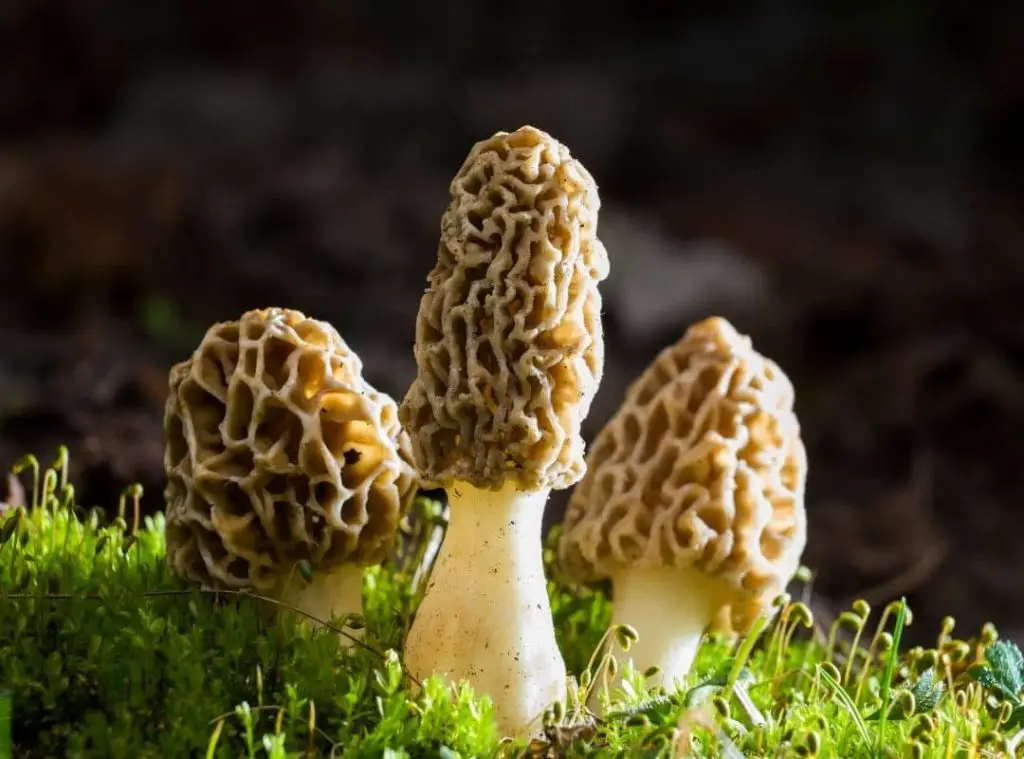
Common Edible Mushrooms in Kentucky
Kentucky is home to a variety of edible mushrooms that foragers can enjoy. While caution should always be exercised when foraging for mushrooms, here are some common edible mushrooms found in Kentucky:
- Morel Mushrooms (Morchella spp.): Morels are highly sought-after edible mushrooms known for their distinct honeycomb-like caps. They are a prized find for mushroom enthusiasts and are often found in woodland areas during the spring season.
- Chicken-of-the-Woods (Laetiporus spp.): Chicken-of-the-Woods is a vibrant and striking mushroom with a bright orange to yellow color. It often grows in clusters on decaying or dead trees, particularly oak. The young tender parts of this mushroom have a taste and texture reminiscent of chicken.
- Hen-of-the-Woods (Grifola frondosa): Also known as Maitake, Hen-of-the-Woods is a large, frilly mushroom that grows at the base of hardwood trees, such as oaks. It has a rich, earthy flavor and a meaty texture. This mushroom is highly prized for its culinary uses.
- Chanterelles (Cantharellus spp.): Chanterelles are distinctive, funnel-shaped mushrooms with a fruity and peppery aroma. They have a vibrant yellow to orange color and are found in forests with a mix of hardwood and conifer trees. Chanterelles are known for their excellent flavor and are commonly used in gourmet cooking.
- Black Trumpet (Craterellus cornucopioides): Black Trumpets are small, funnel-shaped mushrooms with a dark brown to black color. They have a delicate and rich flavor, often described as earthy and smoky. These mushrooms are typically found in association with hardwood trees, such as oak and beech.
- Puffball Mushrooms (Calvatia spp.): Puffball mushrooms are round or pear-shaped mushrooms that can grow to various sizes. When young and white inside, they are edible and have a mild flavor. It is important to correctly identify puffballs and ensure they are still in the early stages before consuming them.
Remember, it is crucial to accurately identify mushrooms before consuming them. If you are uncertain about the identification of any mushroom, consult with experienced foragers or mycologists who can provide guidance to ensure a safe and enjoyable foraging experience.
Toxic Mushrooms in Kentucky
While there are several edible mushrooms in Kentucky, it is equally important to be aware of the toxic and potentially dangerous mushrooms that can be found in the region. Mistaking toxic mushrooms for edible ones can have severe health consequences. Here are some toxic mushrooms commonly found in Kentucky:
- Destroying Angels (Amanita spp.): Destroying angels are highly toxic mushrooms belonging to the Amanita genus. They typically have a white or creamy color, with a distinct bulbous base, and a ring around the stem. Ingesting these mushrooms can lead to severe organ failure and can be fatal.
- Death Caps (Amanita phalloides): Death caps are another species of Amanita mushrooms, often mistaken for edible varieties. They have a light greenish color and are recognized by their cup-shaped cap and a ring on the stem. Consumption of even a small amount of a death cap can cause severe liver damage and can be life-threatening.
- False Morels (Gyromitra spp.): False morels are mushrooms that resemble true morels but are highly toxic if consumed. They have a brain-like or wrinkled appearance and a reddish-brown color. False morels contain a toxin called gyromitrin, which can cause symptoms ranging from gastrointestinal distress to liver damage.
- Jack-O’-Lanterns (Omphalotus olearius): Jack-O’-Lantern mushrooms are bright orange and often grow in clusters on decaying wood. They are toxic and can cause severe gastrointestinal discomfort if ingested. They should not be confused with the edible chanterelles, which have a similar color but differ in shape and growth pattern.
- False Chanterelles (Hygrophoropsis aurantiaca): False chanterelles resemble true chanterelles in appearance but are not edible. They have an orange to yellow color and can be found in woodland areas. Ingesting false chanterelles can cause gastrointestinal upset and should be avoided.
It is crucial to remember that this is not an exhaustive list of toxic mushrooms in Kentucky. Always exercise caution when foraging for mushrooms and be absolutely certain of the identification before consuming any wild mushroom. If you have any doubts about the safety of a mushroom, it is best to consult with experienced foragers or mycologists to ensure your safety and well-being.
Safety Precautions for Mushroom Hunting
While mushroom hunting can be an exciting adventure, it is important to prioritize safety. Here are some precautions to keep in mind:
- Educate Yourself: Familiarize yourself with the characteristics of morel mushrooms and learn to differentiate them from toxic varieties.
- Use a Field Guide: Carry a reliable field guide or use a reputable mushroom identification app to confirm the mushrooms you collect.
- Avoid Trespassing: Ensure you have permission to hunt for mushrooms on private property, and respect protected areas and national park regulations.
- Wear Proper Gear: Dress appropriately, wear sturdy shoes, and consider using insect repellent to protect against ticks and other pests.
- Stay Hydrated and Carry Snacks: Mushroom hunting can be physically demanding, so remember to stay hydrated and bring snacks to keep your energy levels up.
Tips for Finding Morel Mushrooms in Kentucky
Here are some helpful tips for increasing your chances of finding morel mushrooms in Kentucky:
- Scout the Right Locations: Look for areas with suitable growing conditions, such as moist soil, decaying organic matter, and the presence of specific tree species.
- Timing is Key: Plan your foraging trip during the morel mushroom season, typically in early spring when the soil temperature reaches around 50°F (10°C).
- Search Near Dead Trees: Morels often grow near dead or decaying trees, particularly elm, ash, apple, tulip poplar, and oak.
- Scan the Forest Floor: Pay close attention to the forest floor, as morels blend in with leaf litter and other debris. Their cone-shaped caps can be partially buried, so look carefully.
- Be Patient and Persistent: Mushroom hunting requires patience and perseverance. Stay observant, as morels can be easily missed if you’re not paying attention.
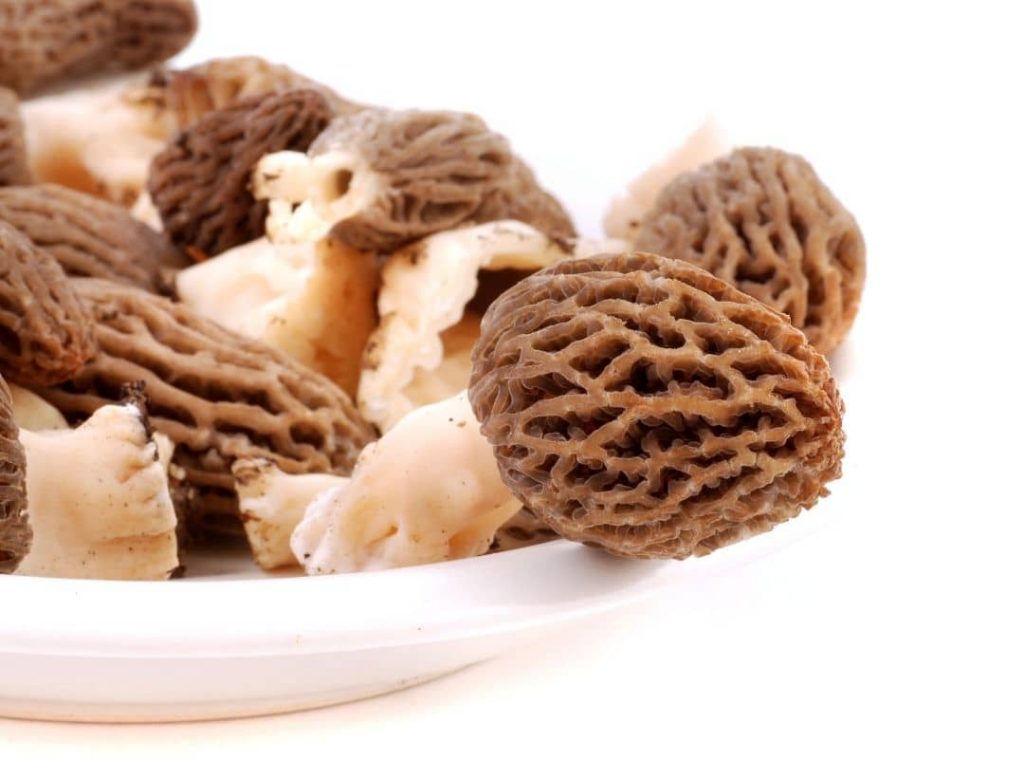
Conclusion
Kentucky’s diverse landscape and favorable growing conditions make it an excellent destination for morel mushroom hunting. By exploring the right locations, adhering to safety precautions, and following helpful tips, you can increase your chances of finding these prized mushrooms. Remember to enjoy the process, and once you’ve gathered a bountiful harvest, savor the delightful flavors of morel mushrooms in your favorite recipes.
FAQs
Are morel mushrooms easy to find in Kentucky?
Morel mushrooms can be elusive, but with proper knowledge and preparation, you can increase your chances of finding them in Kentucky.
Are all morel mushrooms safe to eat?
While most morel mushrooms are safe to eat, it is important to properly identify them and differentiate them from toxic varieties. If in doubt, consult an expert.
Can I commercially sell the morel mushrooms I find?
Selling wild mushrooms generally requires specific licenses and permits. It’s best to check with local regulations and authorities before selling morel mushrooms.
Can morel mushrooms be cultivated at home?
Morel mushroom cultivation can be challenging and is not typically done at home. However, some advanced mushroom enthusiasts and farmers have had success with cultivating morels.
How should I store morel mushrooms after harvesting them?
Store fresh morel mushrooms in a paper bag or wrapped in a damp cloth in the refrigerator. They are best consumed within a few days of harvesting for optimal flavor.

